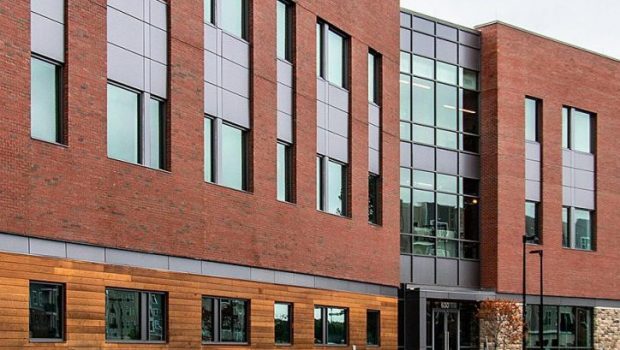Partnership brings EMBA ingenuity to NASA technology | VTx
Over about two months, each team went through the process of “customer discovery” with their respective technology. Customer discovery is the first step in building a successful startup or corporate venture, with the end goal of figuring out who the potential customers are and whether the idea (or technology) will appeal to them.
Ordinarily, this process is done by identifying a need in the marketplace and designing a product or service around said need. However, the Executive MBA students were tasked with taking existing NASA technologies and identifying specific commercial applications for them.
Essentially, they were asked to reverse-engineer the customer discovery process.
“It was challenging to have an innovative one-of-a-kind technology from NASA but not knowing what problem it solves in a particular market,” explained Christopher Gaines, member of the ALL-Insulation team. “The products have value for NASA and space exploration, but do they have value in a commercial earth setting?”
“Critical thinking enabled the ability to see the technologies and to decipher which ones had the best potential to build a business from,” said Jonathan Wendland, member of the Aqua Entrée team. “The key was to understand which technology enabled the best potential for other commercial uses.”
The teams had the benefit of being able to interact with the inventors of the technologies, gaining technical insight into their respective innovations.
“It was also very enlightening and enjoyable to work with the technology inventor, Jacob Torres,” said Randy Wood, member of the Aqua Entrée team. “His proposal for providing fresh food and vegetables in a zero/low gravity space environment (Passive Porous Tube Nutrient Delivery System, or PPTNDS) presented several possible uses on earth.”
Each team worked like a startup company, performing market research, customer interviews, and competitive analyses. At the end of the module, each team delivered their business plan pitch to a panel comprised of professors and NASA T2X personnel.
The result was a successful module and, perhaps, a few ideas for commercialization. “About two out of the 12 expressed an interest in spinning off the technology commercially,” said Townsend.
The benefit to the Executive MBA students to have real-world access to NASA technologies in an exercise in entrepreneurship is obvious. But what is the benefit to NASA?
“We see universities as a hub of innovation,” said McShane. “We want to be connected to universities in several different ways, and this is a great jumping-off point.”
Christie Funk, T2X program manager, explained that “We want to be engaged with academia, with industry, with entrepreneurship, and with start-up sectors. This is a great opportunity to get a different perspective, to get feedback on commercial applications around our technology. It provides the perspective that we don’t always get from inside the agency.”
A great deal of innovation stems from NASA research but public-private partnerships are critical to the development and translation of that research into products and services that benefit society.
The evolving collaboration between faculty and staff at Virginia Tech with NASA personnel has created the conditions for the emergence of is known as The New Horizons Collaborative at Virginia Tech. The purpose of The New Horizons Collaborative at Virginia Tech is to “advance the next generation of entrepreneurs to create and cultivate leading edge ‘deep tech’ and science-based ventures through a public-private partnerships between Virginia Tech's Pamplin College of Business and Tech Center Research Park together in collaboration with NASA's Space Technology Mission Directorate Transfer Expansion program (T2X), Hampton University, and other public and private partners.”
The success of the initial “launch” of the collaboration between the Executive MBA and the T2U programs has resulted in its continuance; the fall 2021 cohort will be working with three new technologies.
“We are looking at ways to expand the program to include undergraduate courses as well,” said Townsend.
“Through this partnership with NASA, Virginia Tech students will take humans well beyond the moon and to the stars.”








Gloss